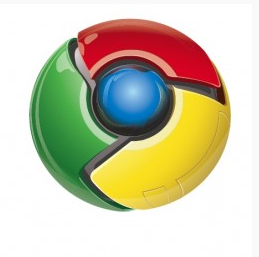Chrome OS May Support "Legacy" PC Applications
Chromoting will enable access to legacy PC applications within the Chrome OS browser.
Previously it was indicated that Google's Chrome OS--the Chrome browser mounted on a customized version of Linux--would not run Microsoft Windows applications. After all, the Google OS would be completely web-driven, and not support the installation of programs within the OS to the hard drive. However, that's apparently about to change with a new feature that's currently in the works.
Called "chromoting," the feature was originally revealed by Google software engineer Gary Kačmarčík in a Google groups Chromium discussion. Unfortunately, he doesn't provide any additional details save for its eventual release, however it's speculated that chromoting will be more in tune with a VPN/sharing functionality than anything similar to Windows-based application installation. This would mean that the actual Windows-based rig would be required to stay on in order to access the programs.
"We're adding new capabilities all the time," he said. "With this functionality (unofficially named "chromoting"), Chrome OS will not only be great platform for running modern web apps, but will also enable you to access legacy PC applications right within the browser."
Mark Lunney, a Flash developer for Glue London, didn't seem too keen on the idea, especially if chromoting does actually use a remote desktop application environment to access legacy apps. "I'm struggling to see the usefulness of this," he said. "I'm not going to keep my Windows Laptop running to use programs such as the Adobe suite. My experience with virtual machines also shows that they run quite slowly--fine for cross-browser testing, but not the kind of 3D modeling and video editing software that are the main reasons I don't think I'll be able to switch to Chrome."
Kačmarčík said that the Chromium team would have more details to share on chromoting in the coming month.
Get Tom's Hardware's best news and in-depth reviews, straight to your inbox.

Kevin Parrish has over a decade of experience as a writer, editor, and product tester. His work focused on computer hardware, networking equipment, smartphones, tablets, gaming consoles, and other internet-connected devices. His work has appeared in Tom's Hardware, Tom's Guide, Maximum PC, Digital Trends, Android Authority, How-To Geek, Lifewire, and others.
-
Abrahm "My experience with virtual machines also shows that they run quite slowly--fine for cross-browser testing, but not the kind of 3D modeling and video editing software that are the main reasons I don't think I'll be able to switch to Chrome."Reply
What? Hasn't Chrome been described and marketed as a cloud based Netbook operating system? This guy really thought he was going to be able to completely switch to chrome and do 3D modeling? -
ta152h So, are they saying the Windows NT family apps are "legacy".Reply
They run an OS based on something created in the 1960s, and call apps that run on the dominant operating system "legacy"? -
the_krasno So it has the google equivalent of DosBox. I like that, since I play many old school games.Reply -
Kelavarus obiown77But can it ........ install Crysis?Reply
That was horrible but I laughed.
But seriously. "Chromoting"? Marketing needs to give it a rest and stop attempting to make catchphrases. Do Google employees now get Chromotions? -
alextheblue the_krasnoSo it has the google equivalent of DosBox. I like that, since I play many old school games.Where does it say anything like this? They're talking about something more akin to RDP. You'd be better off porting Windows and DOS emulators to Chrome OS.Reply
